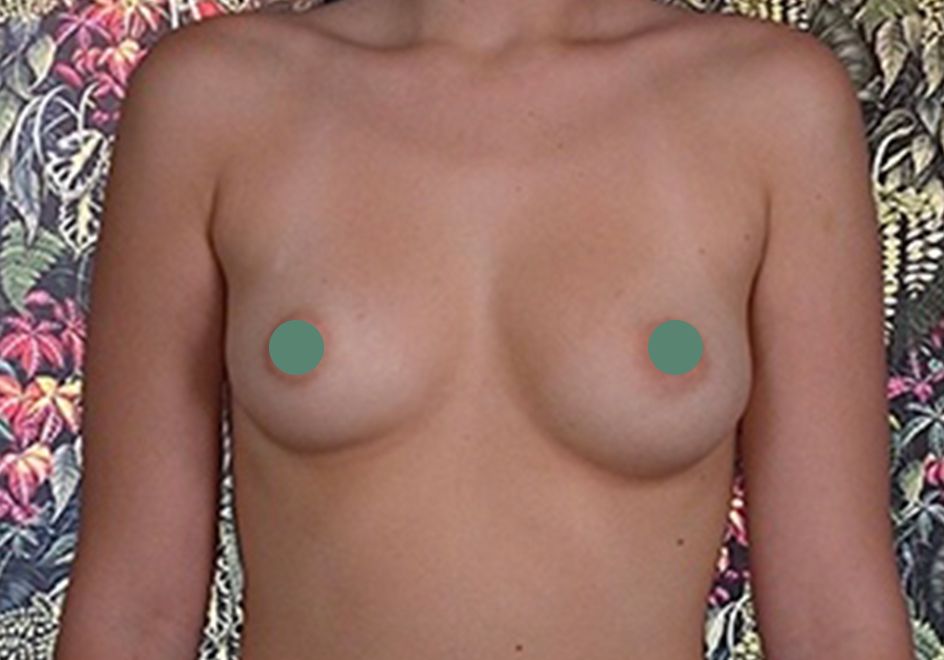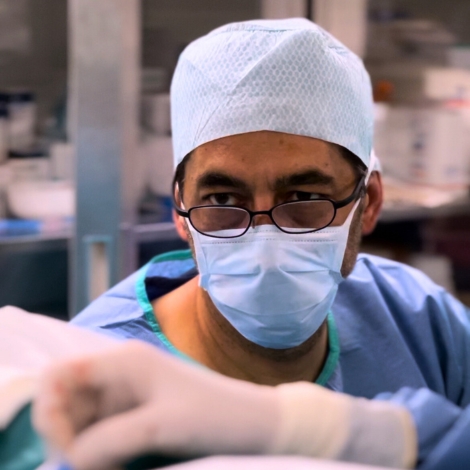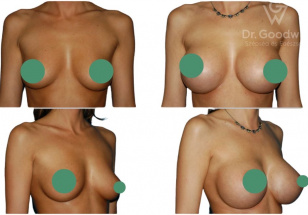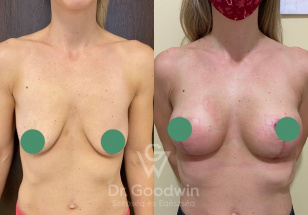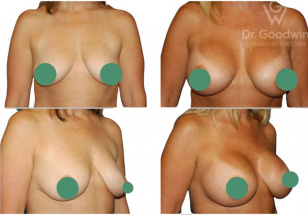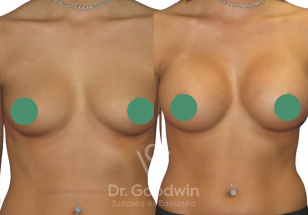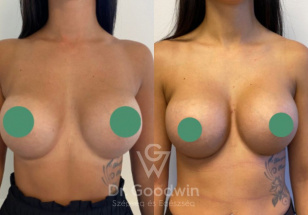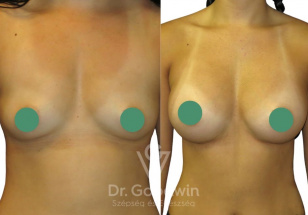Breast plastic surgery
So you're thinking about getting a breast augmentation, breast reduction, breast lift surgery?
Well… we're here to tell you about how awesome they are!
If you'd like to know more click and get an appointment with our expert consultants!
If you worried about the financials, let us ease you on the topic, because at our clinic you can get pre-evaluated for a loan to cover your expenses for the procedure!
BREAST LIFT, REDUCTION AND AUGMENTATION
A breast lift or reduction or augmentation is a surgical procedure performed by a plastic surgeon to change the shape or the size of your breasts. During a breast lift, excess skin is removed and breast tissue is reshaped to raise the breasts. In the case of reduction, excess tissue is removed, which is quite the opposite of breast augmentation, in which case there is additional expanditure (prosthesis) to enlarge and to change the shape of your mammaries.A breast lift won't significantly change the size of your breasts. However, a breast lift can be done in combination with breast augmentation or breast reduction.
WHEN BREAST SURGERY SHOULD BE DONE?
As you get older, your breasts change — losing elasticity and firmness,volume. There are many causes for these kinds of breast changes, including:
-
Pregnancy. During pregnancy, the ligaments that support your breasts might stretch as your breasts get fuller and heavier. This stretching might contribute to sagging breasts after pregnancy — whether or not you breast-feed your baby.
-
Weight fluctuations. Changes in your weight can cause your breast skin to stretch and lose elasticity.
-
Gravity. Over time, gravity causes ligaments in the breasts to stretch and sag.
A breast lift can reduce sagging and raise the position of the nipples and the darker area surrounding the nipples (areolae). The size of the areolae can also be reduced during the procedure to keep them in proportion to the newly shaped breasts.
You might consider a breast lift if:
-
Your breasts sag — they've lost shape and volume, or they've gotten flatter and longer
-
Your nipples — when your breasts are unsupported — fall below your breast creases
-
Your nipples and areolae point downward
-
Your areolae have stretched out of proportion to your breasts
- One of your breasts falls lower than the other
A breast altering procedure isn't for everyone. If you're considering pregnancy at any point in the future, you might delay getting any of these procedures getting done. During pregnancy your breasts could stretch and offset the results of the surgery.
Breast-feeding is a consideration as well. Although breast-feeding is usually possible after a breast lift — since the nipples aren't separated from the underlying breast tissue.
While these type of surgeries accomodate women with any breasts size or shape, women with smaller breasts will likely have longer lasting results. Larger breasts are heavier, genetically lack that volume of elasticity in their tissues which makes it more likely to sag again.
During a consultation we can point you to the right direction, so you can have a satisfactory outcome.
HOW LONG DO THESE PROCEDURES LASTS?
The short answer is "it depends." For some, they experience long-lasting results, while others may want minor revisions only after a few years. To say how long results last from a typical breast surgery is dependent upon many factors such as age, genetics, health and dietary habits, as well as surgical techniques.
WHAT ARE THE RISKS OF A BREAST LIFT?
As any surgeries, these procedures also comes with risk, however the percentage of the occurance is minimal, it is still important to note them:
-
Scarring. While scars are permanent, they'll soften and fade within one to two years. Scars from a breast lift can usually be hidden by bras and bathing suits. Rarely, poor healing can cause scars to become thick and wide.
-
Changes in nipple or breast sensation. While sensation typically returns within several weeks, some loss of feeling might be permanent. Erotic sensation typically isn't affected.
-
Irregularities or asymmetry in the shape and size of the breasts. This could occuras a result of changes during the healing process. Also, surgery might not successfully correct pre-existing asymmetry.
- Difficulty breast-feeding. Whilethe ability to breast-feed is uninterrupted , some women might have difficulty producing enough milk.
Like any major surgery, these procedures also poses a risk of bleeding, infection and an adverse reaction to anesthesia.
With us you can walk trough the process and if it’s still unclear what to expect, we provide all the answers for your questions.
HOW SHOULD I PREPARE FOR THIS PROCEDURE?
Initially, after the consultation with our adviser you'll talk to your plastic surgeon about your breast lift. During your first visit, your plastic surgeon will likely:
-
Review your medical history. Be prepared to answer questions about current and past medical conditions. Tell the doctor if you have a family history of breast cancer. Share the results of any mammograms or breast biopsies. Talk about any medications you're taking or have taken recently, as well as any surgeries you've had.
-
Do a physical exam. To determine your treatment options, the doctor will examine your breasts — including the position of your nipples and areolae.
-
They will also consider the quality of your skin tone. Breast skin that has good tone will hold the breasts in a better position after a breast lift. The doctor might also take pictures of your breasts for your medical record.
-
Discuss your expectations. Explain why you want a breast lift and what you're hoping for in terms of appearance after the procedure. Make sure you understand the risks and benefits, including scarring and changes in nipple or breast sensation.
Before a breast lift you might also need to:
-
Schedule a mammogram. Your doctor might recommend a baseline mammogram, before the procedure and another mammogram a few months afterward. This will help your medical team see changes in your breast tissue and interpret future mammograms.
-
Stop smoking. Smoking decreases blood flow in the skin and can slow the healing process. If you smoke, your doctor will recommend that you stop smoking before surgery.
-
Avoid certain medications. You'll likely need to avoid taking aspirin, anti- inflammatory drugs and herbal supplements, which can increase bleeding.
-
Arrange for help during recovery. Make plans for someone to drive you home after surgery and stay with you as you begin to recover. You might need someone to help you with daily activities, such as washing your hair, during your initial recovery.
-
Be at a healthy weight. Consider making dietary changes or participating in an exercise program to assist with weight loss if you've gained weight in the past year.
WHAT HAPPENS IN THE OPERATING THEATRE?
The procedure is done under general anaesthesia. Techniques used to remove breast skin and reshape breast tissue vary. The specific technique your plastic surgeon chooses will determine the location of the incisions and the resulting scars. Your doctor might make incisions:
- Around the areolae — the darker area surrounding the nipples
- Extending downward from the areolae to the breast creases
- Horizontally along the breast creases
Your doctor might place stitches deep within your breasts to reshape your breast tissue and, if necessary, reduce the size of your areolae. He or she will remove excess breast skin and shift the nipples to higher positions. Then your doctor will bring together the breast skin and close the incisions with stitches, surgical tape or skin adhesives.
Breast augmentation procedure
Breast augmentation is the most popular breast plastic surgery, because the majority of women usually complain about too small breasts. They want bigger, fuller breasts, which can make their cleavage much more attractive. Breast augmentation surgeries can not only create bigger breasts, but are also suitable for correcting asymmetric breasts or tightening breasts that have sagged over time. Breast enlargement is not possible without surgery - different breast enlargement creams are mostly ineffective.
Breast augmentation with implants
During breast augmentation surgery, you can choose from various implants. The plastic surgeon will help you choose the right size and shape of implant. During the procedure, we use only the most modern implants, for which the manufacturer undertakes a lifetime replacement guarantee.
The plastic surgeon decides on the method of inserting the implant, taking into account your physical characteristics and the structure of your breasts. The breast implant can be placed under either the existing glandular tissue or the pectoral muscle.
Breast reduction surgery
Large breasts are often associated with serious back pain and spine pain. This is why breast reduction surgery is usually not requested for aesthetic reasons, but rather because of health problems. But even if there is no pain associated with large breasts, they can still cause difficulties in everyday life. For example, because breasts are disproportionately large for the body, it is not easy to get dressed and it also hinders you from playing sports. In such cases the only solution is often to reduce the size of the breasts, the plastic surgeon may recommend breast reduction surgery.
Breast reduction procedure
The size of the incision depends on the size of the breast reduction. For a smaller breast reduction procedure, it is sufficient to use a vertical, short incision, for a larger breast reduction, an additional incision is also required, a transverse incision under the breast. The most preferred is the inverted-T technique or the skin-flap method. In each case, the plastic surgeon decides on the method of intervention, taking into account the patient's capabilities.
During breast reduction surgery excess gland and fatty tissue are removed, so the volume and weight of the breasts can be reduced. The plastic surgeon then creates the planned breast shape from the remaining glandular tissue.
WHAT HAPPENES AFTER BREAST SURGERY?
After the procedure, your breasts will likely be covered with gauze and a surgical support bra. Small tubes might be placed at the incision sites in your breasts to drain any excess blood or fluid.
Your breasts will be swollen and bruised for about two weeks. You'll likely feel pain and soreness around the incisions, which will be red or pink for a few months. Numbness in your nipples, areolae and breast skin might last for about six weeks.
In the first few days after surgery, take pain medication as recommended by your doctor. Avoid straining, bending and lifting. Sleep on your back or your side to keep pressure off your breasts.
Avoid sexual activity for at least one to two weeks after. Ask your doctor when it's OK to resume daily activities, such as washing your hair, showering or bathing. Drainage tubes may be placed near your incisions and are typically removed within a few days. When your doctor removes the tubes, they will also probably change or remove your bandages.
Talk to your doctor about when — or if — your stitches will be removed. Some stitches dissolve on their own. Others must be removed in the doctor's office, often one to two weeks after the procedure.
Continue to wear the surgical support bra round-the-clock for three or four days. Then you'll wear a soft support bra for three or four weeks. Your doctor might suggest using silicone tape or gel on your incisions to promote healing.
While you're healing, keep your breasts out of the sun. Afterward, protect your incisions during sun exposure.
WHAT HAPPENS AFTER SURGERY?
You'll notice an immediate change in the appearance of your breasts — although their shape will continue to change and settle over the next few months.
Initially, scars will appear red and lumpy. While scars are permanent, they'll soften and become thin and white within one to two years. Scars from a breast lift can usually be hidden by bras and bathing suits.
Breast lift results might not be permanent. As you age, your skin will naturally become less elastic, and some sagging might occur — especially if you have larger, heavier breasts. Maintaining a stable, healthy weight can help you retain your results.
This procedure is the girl’s new best friend!
You will feel the boost immediately after surgery witch will push you trough the healing process, and also , your private consultant will check upon you and -if there’s any- answers your questions about the further-ado’s. If you’re still hesitating , don’t hesitate to contact us and book an appointment . Let us change your life for the better!
- Some people are dissatisfied with the shape of their breasts, they don't like the sight of sagging breasts. Breast lift, or even breast lift combined with breast augmentation may be a solution for them.
- Some people suffer from too large breasts. Many people have no idea what a burden carrying large breasts can be on the back. For them, breast reduction is a real cure for serious back pain.
- Some people are dissatisfied with the shape of their breasts: drooping breasts, too big nipples, asymmetrical shape, etc. All can be corrected with the appropriate breast plastic procedure.
BEFORE PLASTIC BREAST SURGERY
In a personal consultation, the plastic surgeon provides detailed information about the necessary tests to be performed before the breast plastic surgery. In general, lab, ultrasound, EKG and chest X-ray are the basic tests that will be needed. Of course, during the consultation with the patient, the plastic surgeon may prescribe the need for additional tests.
During the personal consultation, in addition to general information, the plastic surgeon also formulates specific suggestions together with the patient, they discuss what results can be expected. They discuss the necessary pre-surgery tests, the course of the plastic surgery and what to do after it. The date of the surgery is also determined during the consultation.
HOW LONG DOES THE SURGERY TAKE?
- Breast augmentation surgery usually takes 1 hour.
- Breast reduction surgery usually takes 2.5-3 hours.
- Breast lift surgery usually takes 2-2.5 hours.
DO BREASTS GET SMALLER AFTER BREAST LIFT?
Because patients know a breast lift usually involves removing excess sagging skin, it's natural to wonder if the procedure will make the breasts smaller afterward. ... The report found that following a breast lift, women reported they were wearing a smaller bra, with an average decrease of one bra cup size.
CAN YOU GO BRALESS AFTER ?
You may have heard that once you get breast implants, a reduction, a lift or reconstruction, you can basically go braless because your breasts are now perk and firm. However, forgoing a bra on a regular basis has its consequences. The breast is made up of glandular tissue and fat, held in position only by your skin, it is always a smart choice to add extra support with a wired bra.
HOW PAINFUL IS THE SURGERY?
Your breasts will be swollen and bruised for about two weeks. You'll likely feel pain and soreness around the incisions, which will be red or pink for a few months. ... In the first few days after a breast lift, take pain medication as recommended by your doctor.
Is this procedure safe?
Surgery comes with a risk of complications, even though breast lift surgery itself is typically very safe. Your surgeon and care team will check in with you throughout the healing process and are always available to answer any of your concerns. Risks specific to breast lift surgery include: Temporary numbness.
Is it possible to lie on your stomach after plastic breast surgery?
No, you should not lie on your stomach for 10 days after breast surgery. But you can sleep either on your back or on your side.
How often should you go for a check-up after breast augmentation?
You must appear for a control examination at the times recommended by the attending physician. The first control examination takes place immediately after the operation. After that, a control examination is required after 7 days, 14 days, 6 weeks and 3 months later. In all cases, the examination is preceded by an appointment.
When does the suture removal take place?
At Dr. Goodwin Beauty and Health Center, we work with absorbable sutures during breast plastic surgeries, thus sparing the patient the discomfort of suture removal. So there is no need for suture removal with us.
How long does it take for scars to heal?
The healing time of external scars is approx. 6 months. In the case of internal scars, the total healing time is 2 years. In order to heal the breast plastic scar, it is worth using a scar treatment cream.
BREAST SURGERY PRICES
The prices for breast augmentation, breast augmentation, and breast reduction are informative, the actual price is determined on the basis of an individual consultation. Different types of breast implants also effect the price of breast surgery.
After breast augmentation surgery
